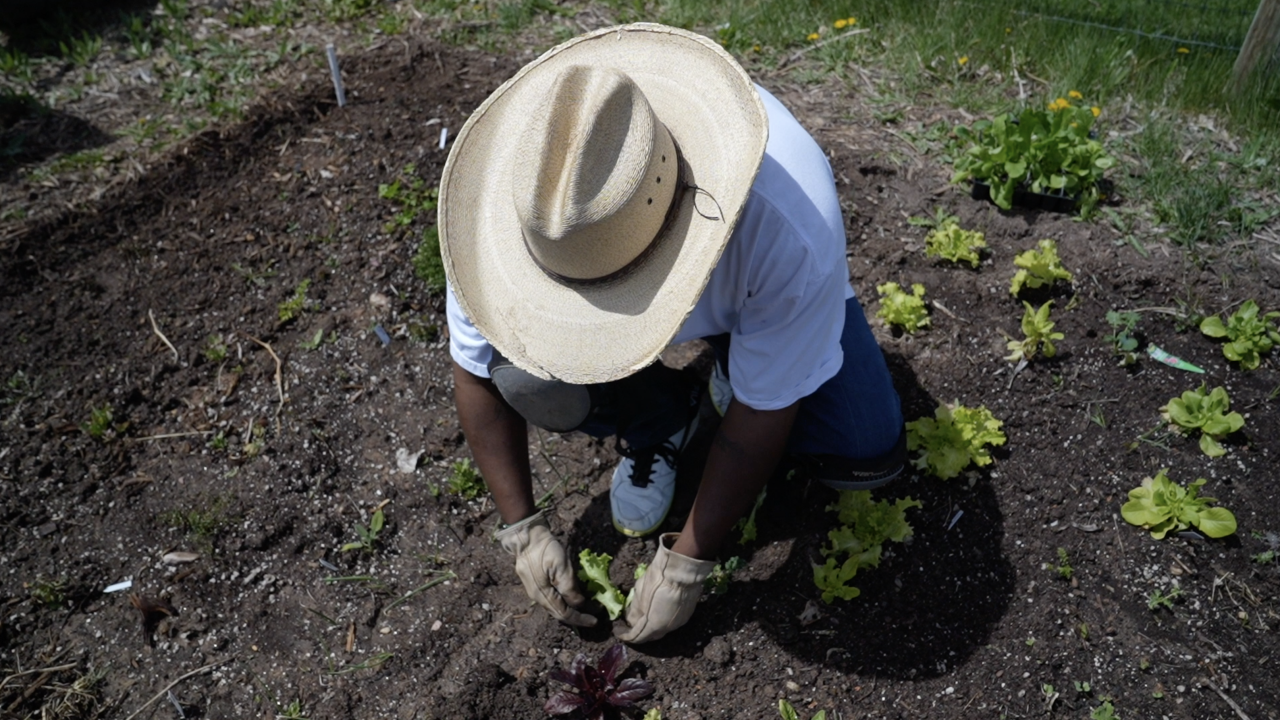In this community garden, Robert Wiggins is growing tomatoes, basil, lettuce, you name it. But he’s also using this space to help diversify American agriculture through education.
“Education allows people to grow in this space but also to learn more about the history of the land,” Robert Wiggins, a farmer and advocate, said.
A new study put together by educators and researchers found that Black farmers in the U.S. lost around $326 billion worth of acreage during the 20th century. The study said that loss was due to discriminatory policies, forced sales and other factors.
“As of January 2022, that $326 billion basically represents the market capitalization of Target, Ford Motor Company, and Starbucks combined,” Dania Francis, an economist at the University of Massachusetts, Boston, said. She was also one of the authors of the study and said that number could range from $259 billion to $385 billion.
She said they looked at acreage lost, land value, and income when calculating the total. The estimate was based on 17 states in the U.S. –- mostly in the south — from 1920 to 2020.
“It’s the value of the land plus maybe some income that might have come from the land, but we know land is an asset people build wealth upon,” she explained.
“That was a big dream that people had. Own your own land, don't rent,” George Junne, a professor of Africana studies at the University of Northern Colorado, said.
George Junne and Jay Trask, an archivist, took me through archives of areas like Dearfield, Colorado – a historically Black farming settlement in the 1900s that is now considered a ghost town.
“All over the country there were farming communities and they actually began after the Revolutionary War around the United States,” Junne said.
Stats from the USDA agricultural census show Black farmers peaked in 1910 at 16 to 19 million acres. Now, 4.7 million acres are owned by Black farmers. That’s less than 1% of all farmland.
“When they had the Louisiana Purchase and they bought all that land west, they paid two cents per acre,” Wiggins said. “That two cents has grown quite a lot. An acre of land, non-irrigated, you can expect to pay approximately $1,300 to $1,400.”
“Generational wealth was one of the ideas behind doing something at Dearfield,” Junne said. “They knew if they could own their own land and own their own homes, they could use that to pass on to their children. They could sell it. They could borrow against it.”
“I understand generational poverty very well because I’ve come from it, and I'm working my butt off to gain access to land and resources,” Wiggins said.
Wiggins is trying to change the numbers, with every crop he puts in the ground.
“I hear a lot about poverty, about lack of access and opportunity. Well, I guarantee $250 billion could buy a lot of opportunity,” he said.”It’s not just the value of the land, it is the value of the people in which the land was taken from and what they’ve lost.”





